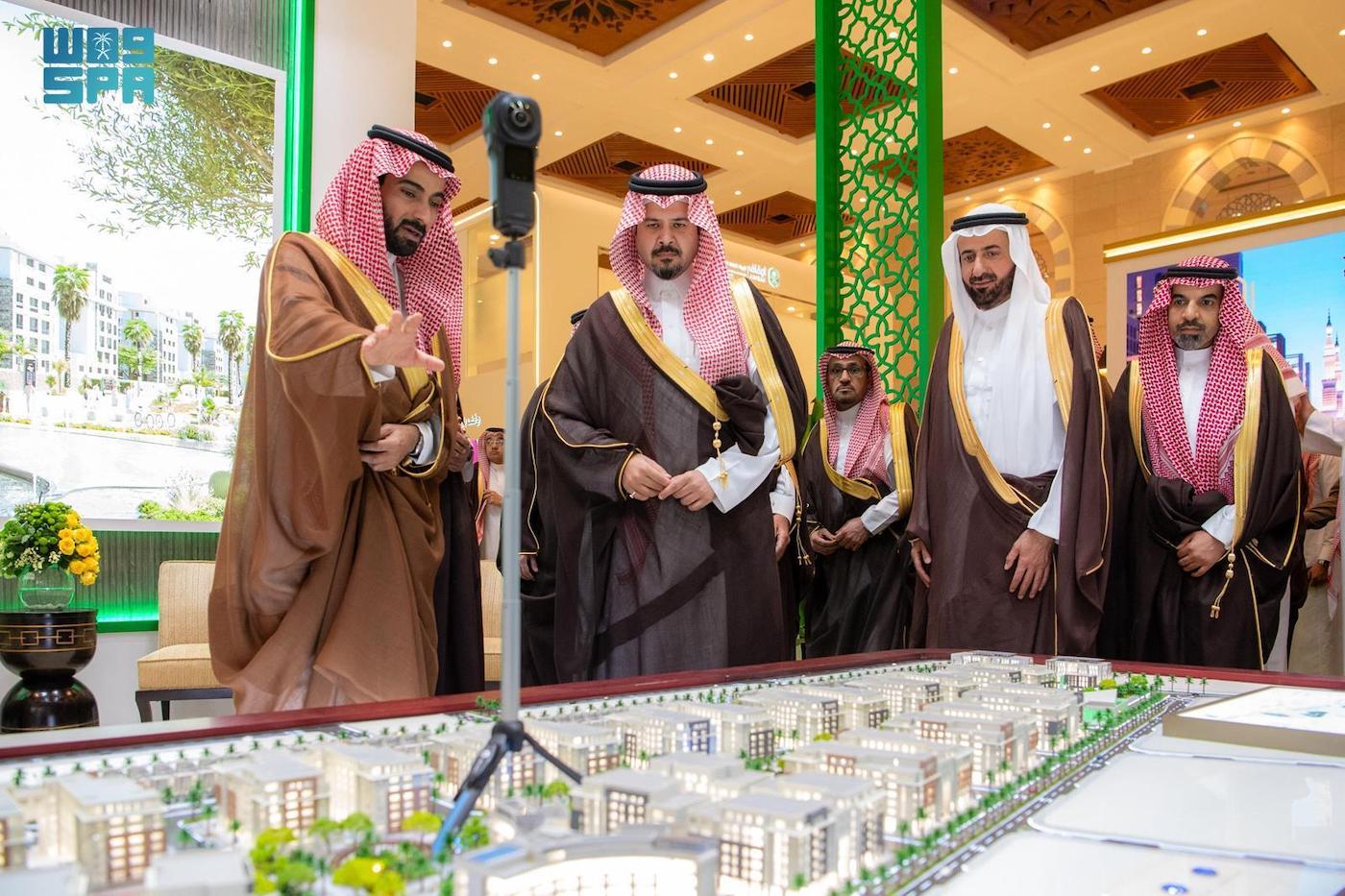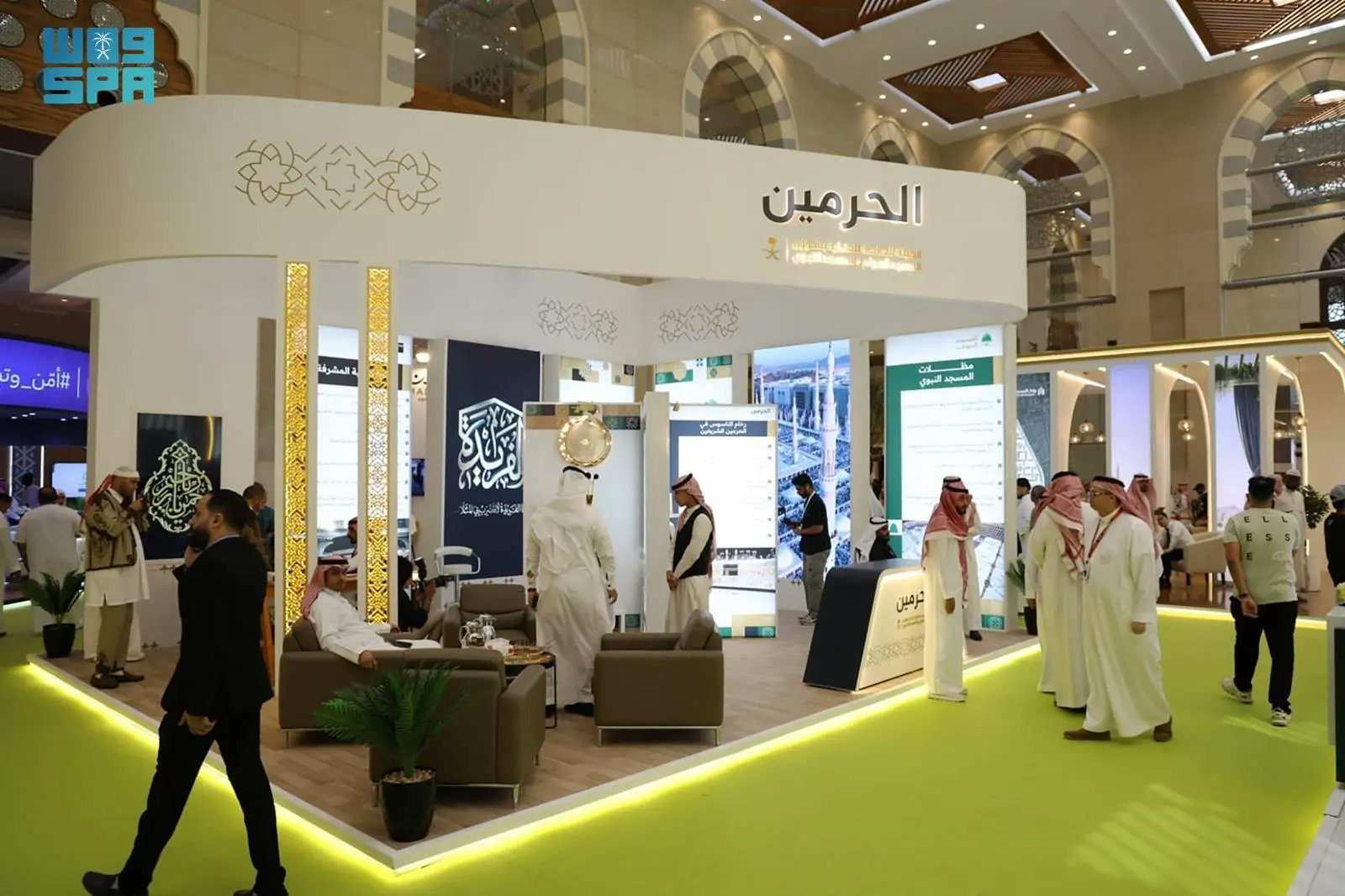JEDDAH: The Ministry of Hajj and Umrah, in collaboration with the Pilgrim Experience Program, organized the inaugural Umrah and Ziyarah Forum at the King Salman International Convention Center in Madinah.
The three-day event, taking place from April 22-24, is being held under the patronage of Prince Salman bin Sultan, the governor of the Madinah region.
Prince Salman said that the leadership has prioritized the enhancement of Hajj and Umrah services during the prosperous era of King Salman and Crown Prince Mohammed bin Salman.
He said: “The great honor bestowed by God on this country is a source of pride for all of us and motivates us to improve the level of services provided to the guests of God, to search for ideas, and to conduct studies that would advance the Umrah and visit sector.”

Minister of Hajj and Umrah Tawfiq Al-Rabiah and Governor of Madinah region Prince Salman bin Sultan attend the Umrah and Ziyarah Forum in Madinah. (SPA)
The forum is an opportunity for specialists to communicate and exchange experiences during dialogue sessions and discussion panels, and to develop recommendations that contribute to enriching visitors’ experience, he added.
He also expressed hope that the forum would yield positive outcomes and thanked the minister of Hajj and Umrah, Tawfiq Al-Rabiah, as well as the ministry’s employees, for organizing the forum.
Prince Salman visited the exhibition held in parallel with the forum. It houses more than 100 pavilions showcasing the services offered by tourism and travel companies, Umrah agencies, academic and research institutions, small and medium enterprises and service developers, as well as companies from related sectors such as hospitality, catering, transportation, healthcare, technology, communications, artificial intelligence, banking and insurance.
A documentary about Madinah, an essential component of the Umrah experience, was screened at the forum.
A group of experts and specialists attended, with discussions focused on enriching the Umrah and Hajj experience and aligning with the goals of Vision 2030.
Al-Rabiah also delivered a speech at the forum, highlighting the special attention given by the leadership to the Two Holy Mosques and visitors to the sites.
One of the most important factors in the Kingdom’s Vision 2030, Al-Rabiah said, is the Pilgrim Experience Program, as the Two Holy Mosques are expected to witness the influx of millions of worshippers and visitors, requiring management by security personnel from the Ministry of Interior, and from the General Authority for the Affairs of the Grand Mosque and the Prophet’s Mosque.
One of the program’s primary goals, he added, is to enrich the visitors’ experience. The forum serves as a comprehensive platform where 180 speakers from the Kingdom and abroad can discuss strategies to improve the experience.
Al-Rabiah highlighted the involvement of 28 government entities and more than 3,000 local and international companies, with more than 1,500 agreements expected to be signed over the course of the event.

Minister of Hajj and Umrah Tawfiq Al-Rabiah and Governor of Madinah region Prince Salman bin Sultan attend the Umrah and Ziyarah Forum in Madinah. (SPA)
He noted that visits were made to 24 countries to address challenges faced by pilgrims and visitors, and to introduce them to the facilities provided by the Kingdom.
Al-Rabiah said that over the past two years, more than 19 million people have visited Al-Rawda Al-Sharifa, along with a significant number of unique historical sites connected to the life of the Prophet Muhammad in Makkah and Madinah, with many of the historical sites having been rehabilitated.
He highlighted the ministry’s commitment to providing quality services throughout pilgrim journeys, describing the Grand Mosque as a globally significant destination. Additionally, he announced the launch of the 1966 contact center in nine languages for pilgrim inquiries, catering to both domestic and international audiences.
Fahd bin Mayouf Al-Ruwaili, the ambassador of Saudi Arabia to France and Monaco, and the permanent representative of the Kingdom to UNESCO, also gave a speech highlighting the role of historical and cultural sites in enriching the visitor experience.
During his address, Al-Ruwaili referenced remarks made by Crown Prince Mohammed bin Salman during the previous Hajj season, emphasizing the Kingdom’s honor in serving the Two Holy Mosques and making it a top priority.
The crown prince’s comments demonstrate the Kingdom’s leadership goals toward serving pilgrims, enabling them to perform their worship rituals and achieve the purposes of Hajj, Umrah, or visitation with ease and peace of mind, he added.

The Umrah and Ziyarah Forum in Madinah is taking place from April 22-24. (SPA)
Four significant agreements were signed during the opening ceremony.
The first, between the General Authority for the Affairs of the Grand Mosque and the Prophet’s Mosque and Nusuk, aimed to establish and operate an awareness center for pilgrims.
The second, with the Prince Mutaib bin Abdulaziz Charitable Foundation, created a fund of SR100 million ($26 million) for water supply.
The third agreement, between the General Authority for Awqaf and the Madinah Region Development Authority, focused on repairing and renovating water facilities at the Meeqat of Dhul-Hulayfah.
The fourth agreement, between the General Authority for Awqaf and the Taybah Mosques Association, addressed support for the Quba Mosque’s needs.
The forum consists of six dialogue sessions and 24 workshops, in which 29 experts and specialists will take part. It also includes several competitions, including the Artificial Intelligence Competition in Umrah and a hackathon on historical sites related to the Prophet Muhammad’s life.














